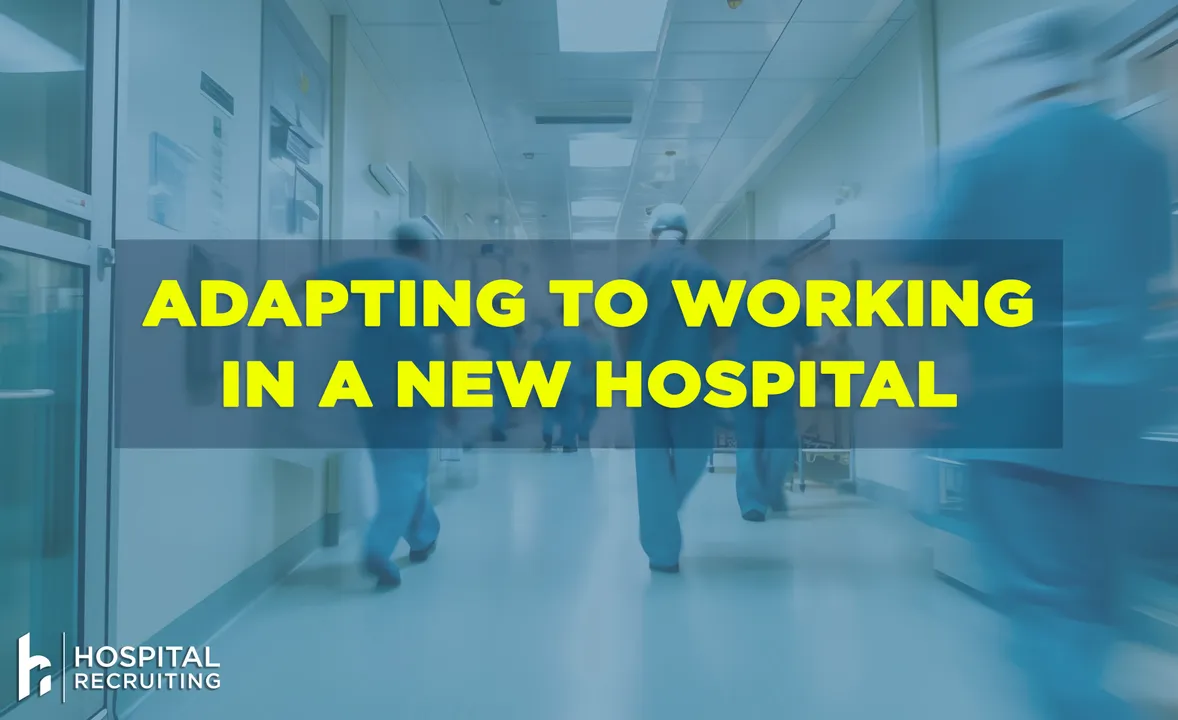How to Adapt to Working in a New Hospital

Adapting to a new hospital can be challenging for a clinician who has previously worked in a different healthcare setting. There are, however, several practical steps you can take to smoothly transition into your new work environment. With a little bit of effort, you can quickly adjust to your new environment, effectively connecting with your new team members and providing the best care possible for your patients.
Study the Hospital’s Culture
Every hospital has its unique culture, shaped by its mission, values, and the people who work there. Understanding this culture is very important for integrating successfully. It will not only help you to better support your new employer but will also equip you to connect with your new team members more effectively.
Studying your new hospital’s culture can involve attending orientation sessions and observing the interactions and communication styles of your colleagues. Ask questions about the hospital’s values, norms, and expectations. By aligning your behavior and practices with the hospital’s culture, you can foster a sense of belonging and positively contribute to the work environment.
Focus on Building Relationships
Building strong, positive relationships with your new colleagues, including nurses, administrative staff, and other clinicians, is essential. The best time to lay the foundation for these relationships is through the first impressions you make and your initial interactions.
Regularly engage in conversations, be open, and show genuine interest in your colleagues’ opinions and experiences. Attend social events, participate in team-related activities, and offer to help others in their work. By establishing rapport and trust, you can create a supportive network that will be invaluable as you begin to work in a new environment.
Learn the Hospital’s Systems and Protocols
Each hospital has its systems and protocols, from electronic health records to patient care procedures. Invest time in learning these systems thoroughly. Pay attention during training sessions, seek guidance from experienced colleagues, and refer to manuals and guidelines.
While it is often impossible to memorize every protocol or policy, you should familiarize yourself with how to quickly find policies that are relevant to your role and understand those that you are likely to use the most. By mastering how to navigate the hospital’s systems and protocols, you can ensure patient safety, comply with regulations, and enhance the quality of care provided.
Draw from Your Past Experiences and Knowledge
Your previous experiences and knowledge are invaluable assets in adapting to a new hospital. While the environment will be different, many aspects of the new environment will be similar to your past hospital experiences.
Share your insights and best practices with your new team, but be receptive to their perspectives and approaches. By combining your experiences with the knowledge of your new colleagues, you can contribute to the continuous improvement of patient care and clinical outcomes while adapting to your new hospital more quickly.
Learn the Layout
Navigating the physical space of a new hospital can be confusing, especially in larger hospitals. Many hospitals are a labyrinth of corridors, wards, and units, each with its specific function and staff. Here are some practical tips for familiarizing yourself with the new environment:
- Take a guided tour - If available, participate in a guided tour of the hospital. It can provide an overview of the different areas, helping you understand the layout and the quickest routes to essential locations like emergency exits, restrooms, and cafeterias.
- Use maps and signage - Hospitals typically have maps and clear signage to guide staff and visitors. Study these resources to understand the layout and learn the locations of different departments, elevators, and stairwells.
- Explore during downtime - Use some time during a break or downtime to explore the hospital. Walk around different floors and units, familiarizing yourself with the locations of various departments, nursing stations, and essential amenities.
- Ask for directions - Don’t hesitate to ask colleagues or staff for directions. People understand that newcomers need time to learn the layout, and most are willing to help you find your way.
- Practice routes - Regularly practice the routes to critical areas like the emergency room, ICU, and radiology department. Depending on your role, knowing these routes may be crucial in time-sensitive situations.
Learning the layout is not just about finding your way; it’s about maximizing your efficiency and responsiveness in the hospital environment. By knowing the quickest routes to essential locations, you can save valuable time, reduce stress, and enhance your ability to deliver prompt and effective care to patients.

Adapting to a new hospital involves more than just adjusting to a new environment; it requires integrating into a unique culture, building relationships, and becoming comfortable with your new surroundings. By putting in some extra effort, you can adapt effectively and enhance your ability to make meaningful contributions to your new hospital.
**Editor's Note: For more resources on integrating to a new work environment, here are 7 things you should do during your first 7 weeks at a new job**
Related Posts
